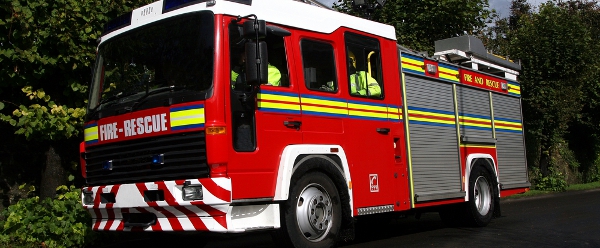
Essex Fire and Rescue Service has quickened response times by up to six minutes and saved £1m annually after deploying ClickSoftware‘s mobile workforce management tool.
The fire service organises shifts for 50 stations and around 1,200 firefighters to ensure each base has enough resources to respond to any emergency.
But, reliant on its paper-based system, Essex Fire was struggling to manage those stations’ resources and deploy the right equipment and personnel to emergency calls, losing valuable time to save lives.
Assistant chief fire officer Paul Hill told CBR: "It was awful. In the past we’ve tried to turn out appliances [fire engines] that weren’t there. You’re introducing a three, four, five, even six-minute delay because of this sort of data issue.
"The amount of effort and work involved and the opportunity for the message to go wrong was very large."
But he added that within a year of implementing ClickSoftware’s solution, the force has saved £1m by using its resources more efficiently.
The Mobile Workforce Management Software product allowed Essex Fire to bin its paper-based system, instead using the tool to allocate shifts to cover both typical and unusual demand, for instance on Bonfire Night.
The software provides one central point to input data, leading to greater accuracy of information, while the improvement in shift planning has helped the fire service reduce overtime as well as the time spent juggling resources to meet demand.
The other cost saving was in integrating ClickSoftware with other systems such as its existing back-office SAP software, making information more accessible and cutting down on time spent doing admin.
Doing this allowed the fire service to use ClickSoftware to log staff timetables, as well as being able to see workers’ skills and qualifications.
This data, alongside information about each station’s firefighting equipment, means the workforce management software can present the most suitable resources to each call.
"If you suddenly gain your blue light qualification [that lets you drive a fire engine during emergencies] then that gets instantly updated on the system," said Hill. "So you know exactly who can or can’t do the job. Equally, if you’ve assigned someone who isn’t qualified, it comes up with a warning sign."
He added: "A watch officer will check the Click software and say ‘okay, I already know who’s here and who’s not because it all comes in from SAP and it’s all visible’.
"I click on their name, click on a seat on the fire engine, and that’s it, they’re assigned. It’s a matter of clicks. The speed of operation was really important. I didn’t want them to click and wait it had to be click and instant."
The user interface design was a big plus for Essex Fire too, with their firefighting staff unfamiliar with business applications.
"It’s very easy to use," Hill said. "We’ve done quite a lot of work making sure that it’s a simple programme to use because essentially firefighters don’t sit in front of PCs. Not all of them are as able as you might want them to be with SAP."






